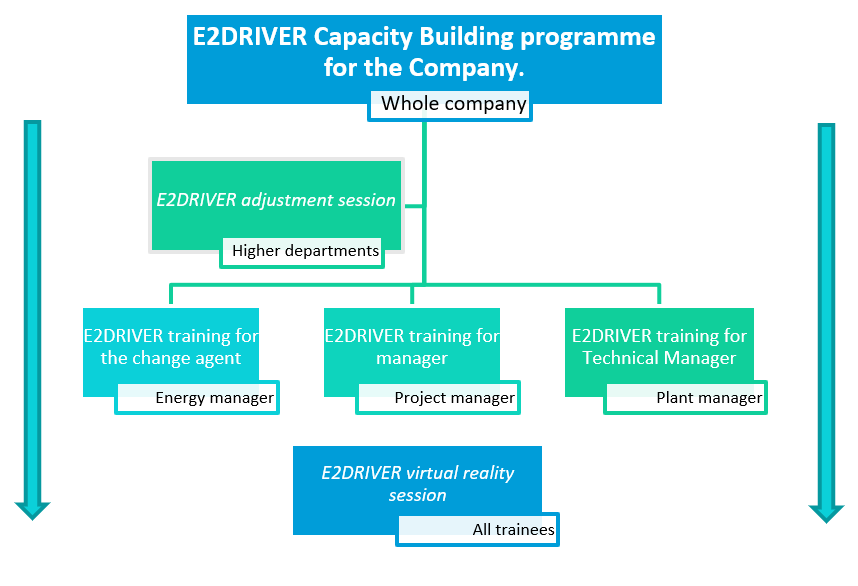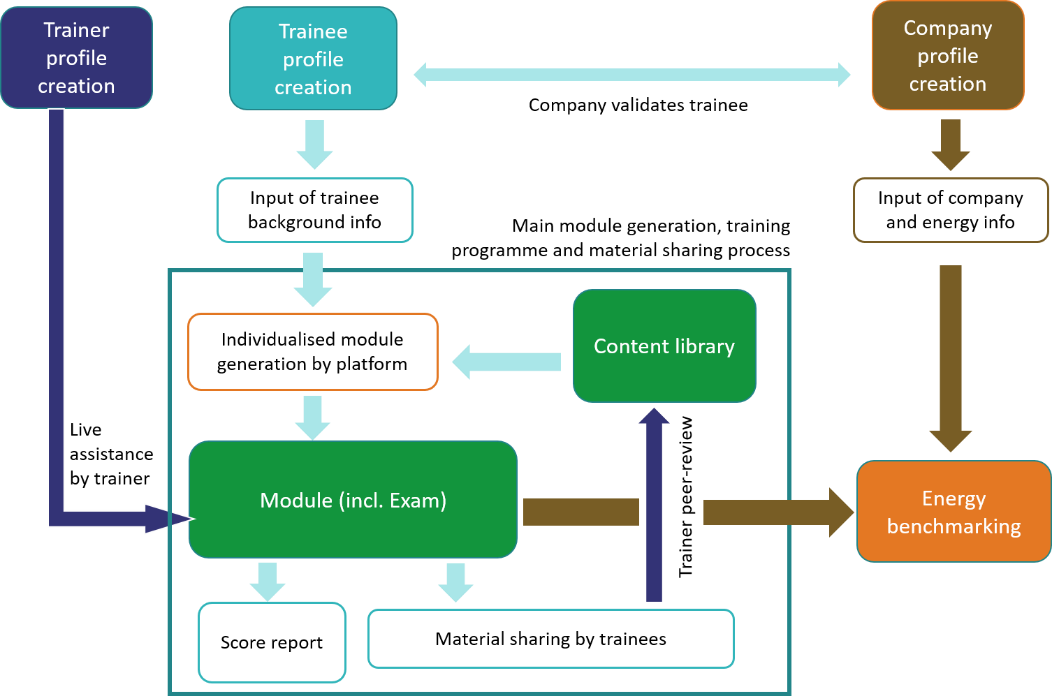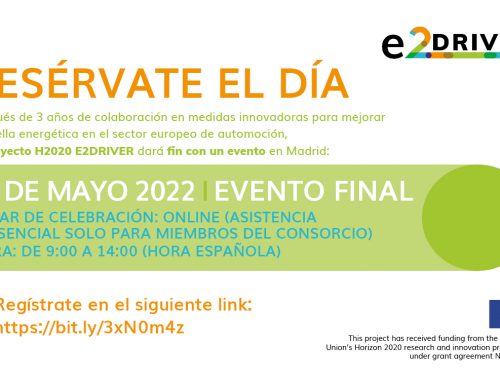For months, the partners at E2DRIVER have been working diligently to create the framework for the E2DRIVER training programme and open access learning platform development specifications. And after a great deal of planning and organising, the results are finally in – the main training format and platform guidelines have been completed! The work culminated in the submission of two deliverables and the completion of Work Package 2.
The scaffolding that outlines the training programme and platform structure was constructed and detailed in two separate documents. (The publicly available training format deliverable is available HERE) . This document is divided into three parts: the format of the training programmes, the format of the training resources and, finally, their connection to the training methodology and the learning platform.
Training programme
The training actions take into account the hierarchical structure of the companies’ workforce, catering to the different skillsets of higher departments, as well as energy, project and plant managers. Thanks to that, a totally customised capacity building programme will be built for each company. The E2DRIVER Capacity building programme will consist of one E2DRIVER Adjustment session, one or more E2DRIVER Trainings and one Virtual Reality session (see image below). The Adjustment session is used for finishing the customisation of the training to the needs and interests of the company, while the E2DRIVER Training sessions are the core of the teaching actions where each employee receives the training that (s)he needs for a better work in terms of energy. The Virtual Reality session will be a closing session where workers can improve their skills in an immersive environment.

Platform framework
The conception of the training and material formats complemented the development of the specifications of the learning platform. The platform consists of several major building blocks, reflecting, in part, the two main didactic goals of the project – adaptive learning and ontological flip-teaching. In terms of the former, the platform will assess each participant’s skills, motivations and background to generate individually tailored training modules. The online part of the ontological flip-teaching approach will encompass a process where trainees create their own learning material after finishing their modules and share it with the rest of community in a library of contents. A simplified illustration below depicts this process. This library will increase the collective intelligence of the automotive sector. The platform will also contain an energy benchmarking section where companies can measure the energy impact of the training, as well as a networking forum where all participants, including external stakeholders (e.g. government or business), can contribute and exchange their insights on energy issues in the automotive sector.

What does all this mean for the rest of the project? These developments matter because, on the one hand, the specific training methodology in terms of topics, teaching techniques, learning activities, and other factors can be developed in detail based on the framework of the previously finalised general training format. On the other hand, the future programming of a platform system will follow the building blocks hitherto established in the specifications document. The following months will also be the period when the virtual reality session is fully developed.
With the completion of WP2, E2DRIVER now moves onto the next stage with exciting results and a clear framework. Stay tuned for more updates on the future of energy efficiency in the automotive sector!


